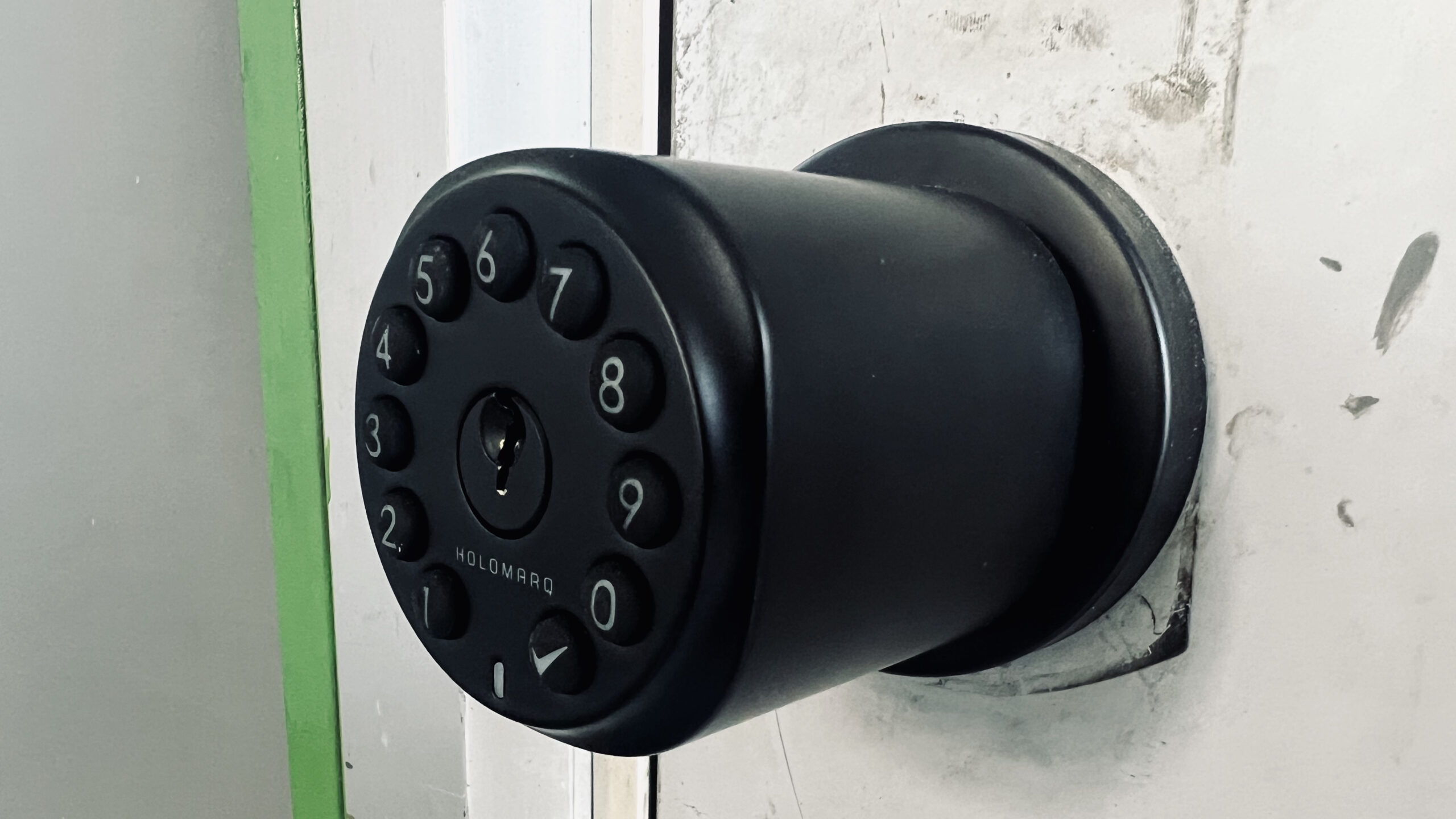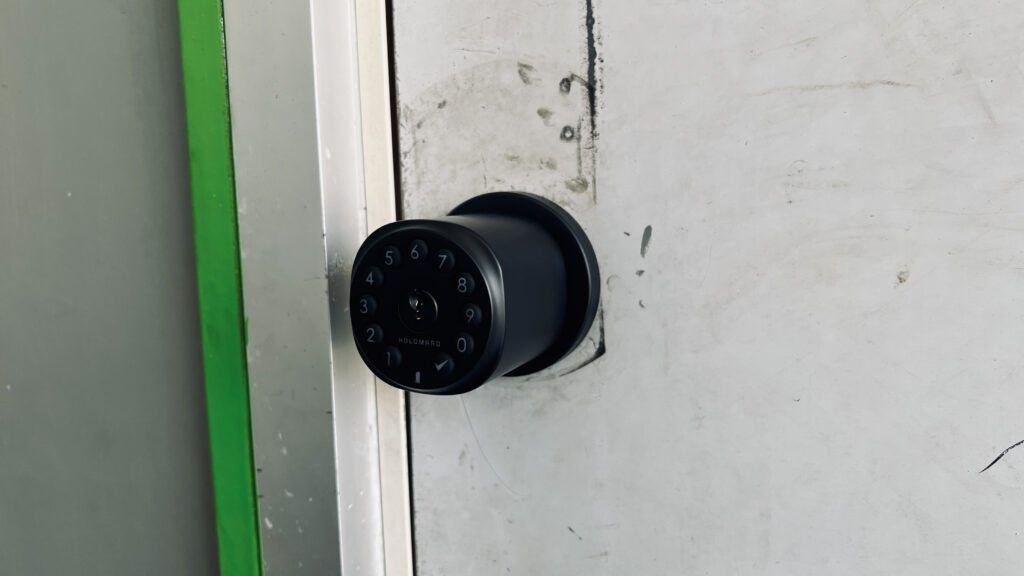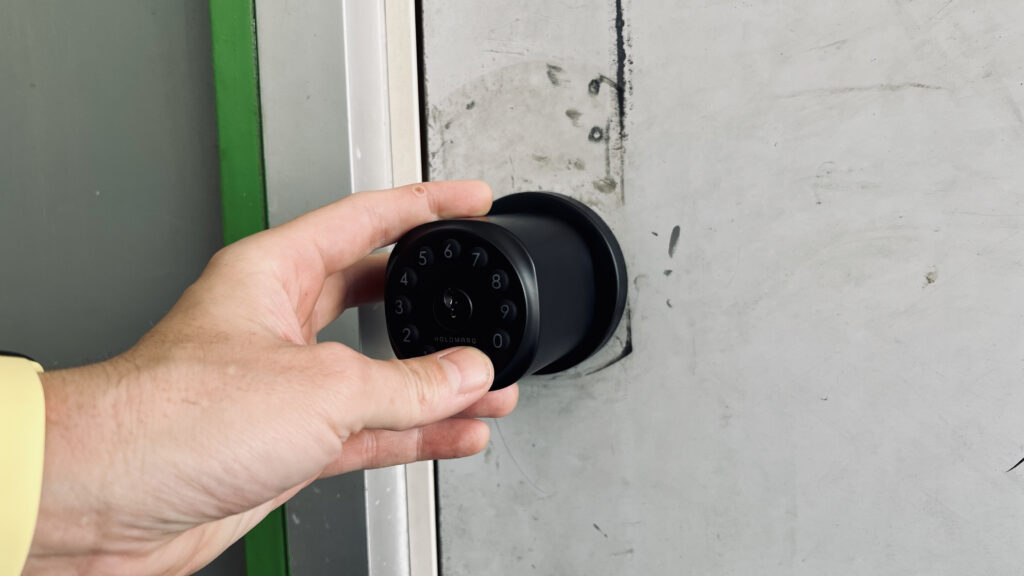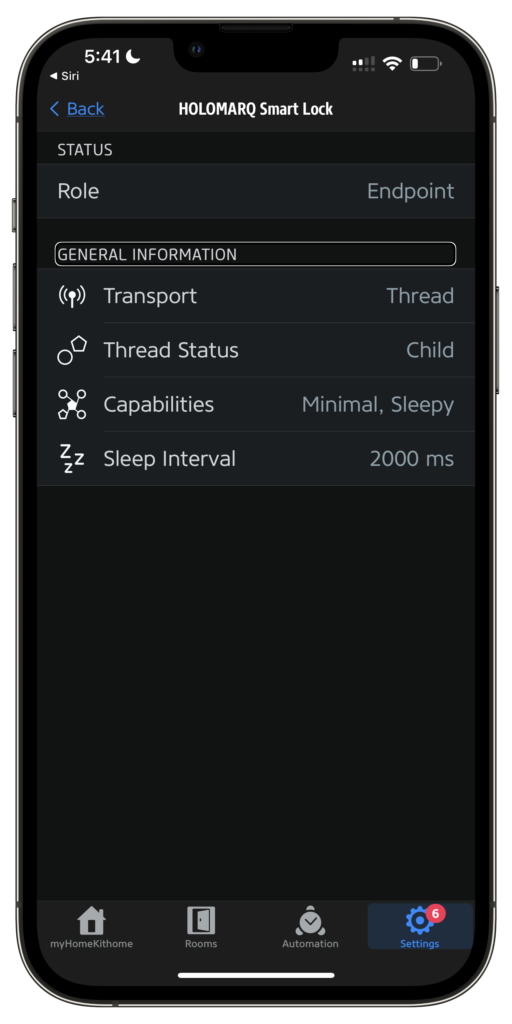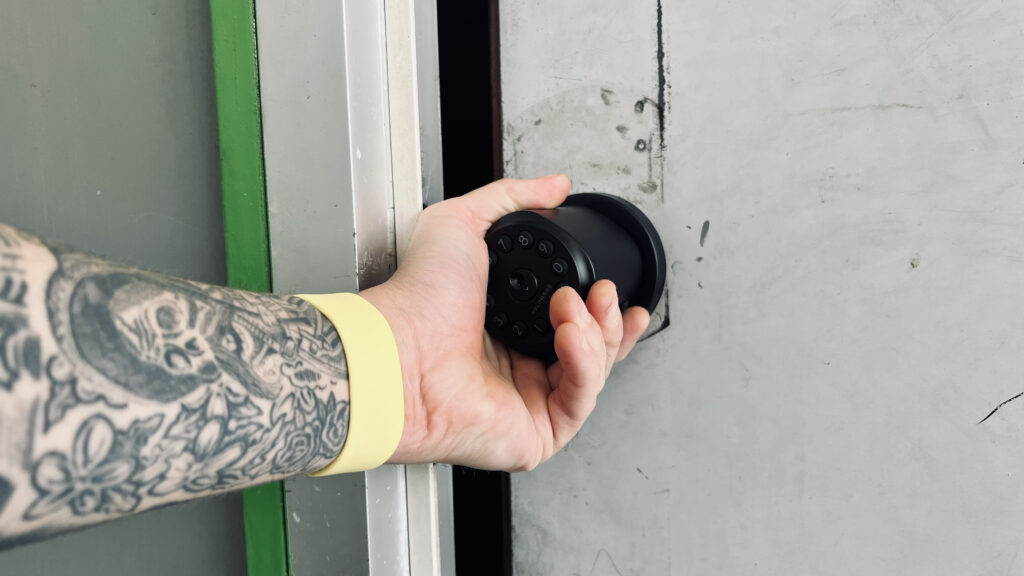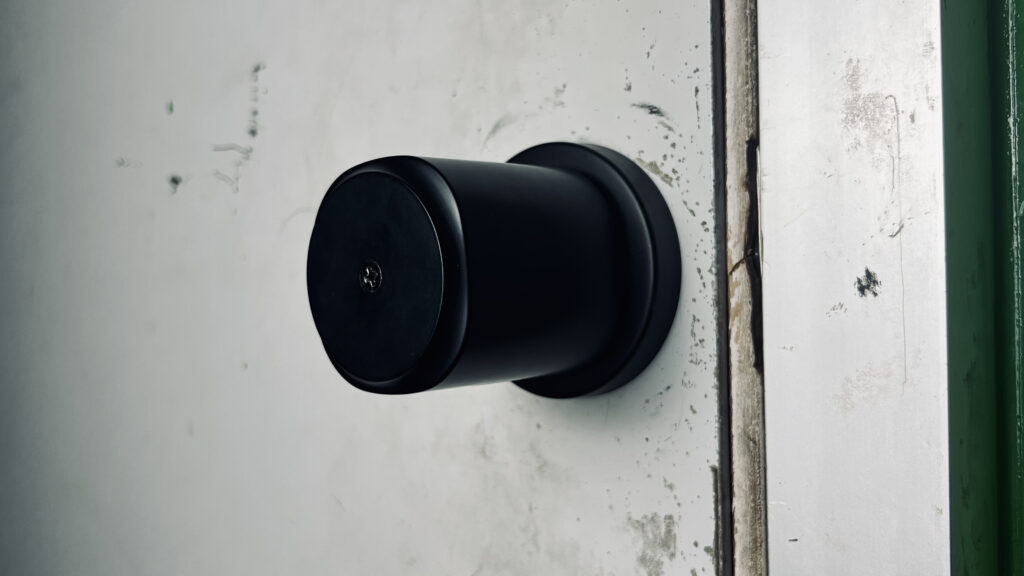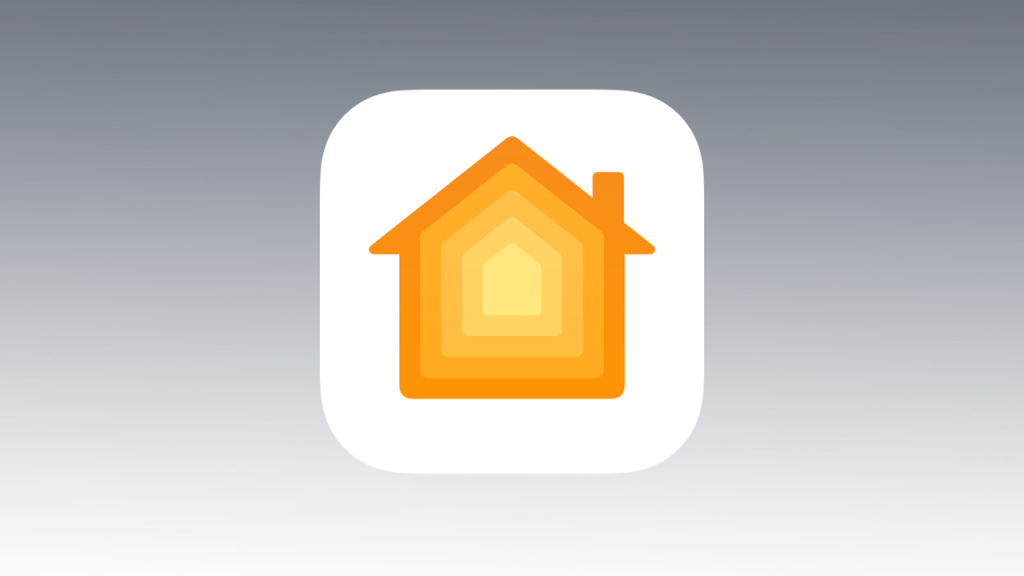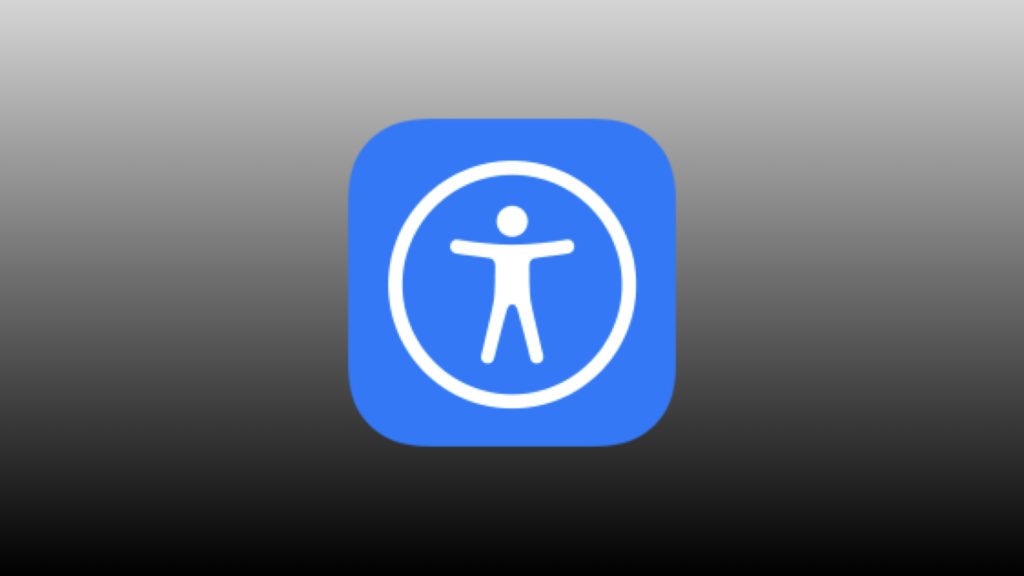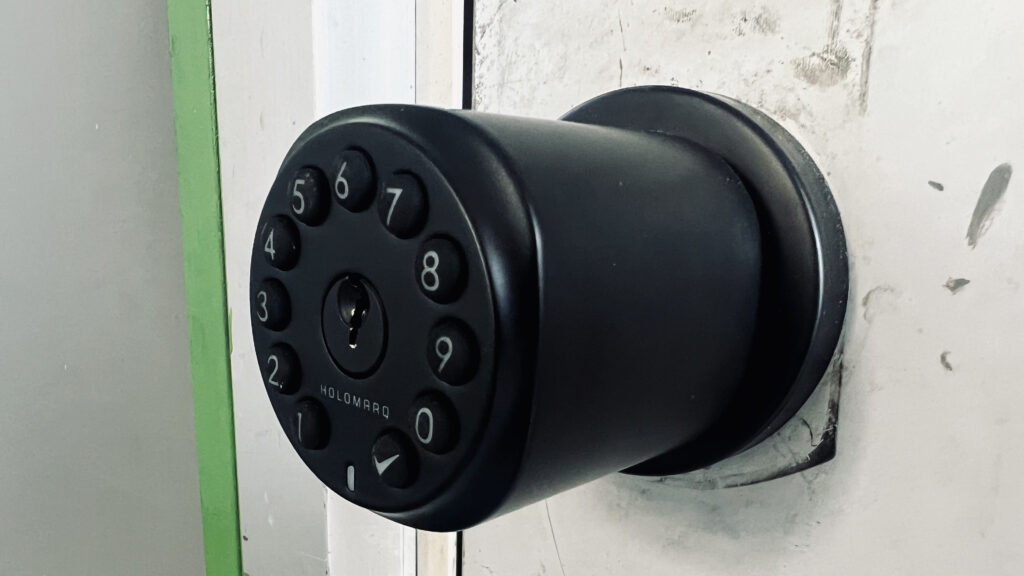HomeKit door locks are a dime a dozen and most of them have some sort of unique feature that sets them apart from one another. But a HomeKit smart doorknob is definitely not run-of-the mill with the Holomarq Sequra Smart Doorknob being the only second, and by far most affordable, option for securing and smartening your interior doors.
Use promo code MYHOME10 at checkout on the Holomarq shop to save 10% off the Sequra Smart Door Knob with Thread through 5 November 2023
Holomarq Sequra at a Glance
- smart latch lock doorknob
- 10-digit backlit keypad storing up to 50 codes
- Anti-peeking pin code masking
- Thread / Bluetooth connectivity
- HomeKit Managed Access
Know This Before You Buy
- HomeKit version only available in matte black and metallic gold
- IP 45 rating
- Requires 4 AA batteries
- USB-C port for emergency power
The Sequra is WAY Ahead of the Competition
This is the only second smart latch lock that works in your HomeKit home. It’s also nearly 3 times more affordable than the Yale Assure Lever Lock, if you can even find one. And, as its name suggests, the Yale Assure Lever Lock is a lever-style latch lock which you might not care for or might not work in all situations.
The Sequra smart doorknob works well for interior doors like bedrooms, closets, or mechanical rooms where you want to restrict access. It’s also got AN IP45 rating against dust and water which is not extremely high, but sufficient enough to withstand the elements barring a tornado or torrential monsoon. So, it can also work great for exterior doors that maybe don’t need the all-out security of a deadbolt like a detached garage, tool shed, workshop, or exterior entrance to a studio / office like where I have mine installed.
A Blind Man EASILY Installed This Lock!
Speaking of installation, it was as easy as it gets, especially if you’ve ever installed a dumb latch lock or doorknob. You do have to disassemble the knob and you’ll definitely want to be gentle with the data cable during this process, but it’s super simple and actually easier than some other dumb knobs I’ve installed in the past.
I went through some tips in my video above and Holomarq also has an installation video that will help. The most difficult part for me was feeding the data cable through the interior assembly in order to connect it, but this was a very minor annoyance that was quickly remedied.
The Fastest Smart Lock in the West, or maybe…
The Sequra connects to your Apple Home over Thread which I’m very happy to see and in my testing it has worked flawlessly. It’s snappy when controlling it through your HomeKit app of choice and responds to Siri requests as fast as Siri can wake up.
This being said, you probably won’t be unlocking and locking your door via app or Siri. Entering a pin code, using it in HomeKit scenes, automations, and even creating a Shortcut with NFC tags to unlock it are all much faster than
pulling out your phone, invoking Siri or opening an app, confirming with FaceID, and waiting for the message to be sent to the lock.
This is also the point where I need to say that a fingerprint sensor would be the fastest way of gaining access and Holomarq does make a version of this doorknob that has one, but it doesn’t work with Apple Home. Hopefully the next version will integrate a fingerprint scanner.
You Can’t Play Peek-a-Boo with This One!
A feature I’ve seen in other smart locks that I’ve low-key been a little jealous of not having is the ability to add digits before and after your actual pin code and the Sequra features this and without even having to activate it, though you can turn it off. Dubbed “anti-peek” mode, you can seemingly add any number of digits before and/or after your actual 4-8 pin code to prevent undesirables from sneaking a peek. This along with the fact that it uses a physical keypad as opposed to a touch screen gives a fair amount of confidence in my easy-to-remember 4-digit code.
The Sequra’s “unique” Design
I’ll first say that I do not hate the overall design of the Sequra. It is functionally pragmatic while still maintaining a fairly traditional aesthetic. However, in order to accommodate the not-so-traditional smart aspects of it, some concessions needed to be made.
The knobs themselves are slightly more robust than a conventional latch lock. Though not overly rotund, it is noticeable, especially when first making the shift. Thankfully you get used to it pretty quick and it does not really interfere with the functionality of the device. I would have also preferred a spherical shape to the knob as opposed to the rounded block form of the Sequra, but is boils down to personal preference and it’s by no means offensive.
Another aspect of the Sequra’s design is that, for the moment anyway, the HomeKit over Thread version only comes in the matte black and metallic gold color ways. Nickel or chrome-plated and even brushed aluminum are much more common than matte black, so that is a little weird, but I actually really like the matte black. It’s a little menacing and intimidating which is great in a lock.
It’s worth noting that Holomarq does make a non-HomeKit version of this smart doorknob that actually includes a fingerprint sensor that has a few more color options. Hopefully this means we’ll eventually get a Thread-connected fingerprint latch lock with a variety of color options at some point in the future.
I really appreciate the ingenuity that went into the design of this lock with its keypad being placed circularly on the face of the knob, but I think I would have preferred the standard 3 x 3 keypad configuration. This being said, I immediately recognize two major issues with this. First there’s the ergonomics of it.
Having a separate keypad above or below the knob means that it is going to get in the way making entering pin codes cumbersome, awkward, and potentially even painful. Second, having a keypad module that is not part of the latch lock seems to be to make the handle significantly less secure. Let’s not kid ourselves here, this type of lock isn’t exactly used at Fort Knox, but minimizing weak points in a lock is a good thing. Also, it’s very likely that going this route would have increased the cost whether the keypad attached to the main unit or connected wirelessly, although I like this latter idea.
Old Habits are Hard to Break
Something you may have noticed, but that I certainly glanced over up until the point that I had it installed and was inside the unlocked room is the fact that this smart latch lock does not have a physical means of locking it from the inside. The Sleekpoint app does allow for auto-lock configuration, though the options are pretty short for my liking, or you can always manually lock it from either the Sleekpoint app, another HomeKit app, or by using Siri. While you won’t get locked in since the knob always disengages the latch regardless of its locked or unlocked state, it is a little unnerving, but it’s not entirely uncommon for dumb latch locks to not have similar functionality.
You Can’t Always Get What You Want
The last point I want to bring up here is the one that everybody will mention and that’s the lack of HomeKey support. If you are unaware, Apple HomeKey is a feature that was rolled out in iOS 16 that essentially stores your lock’s digital key in Apple Wallet. More importantly though, it allows you to lock and unlock the door with the tap of your Apple Watch or iPhone over NFC.
HomeKey would be fantastic for an interior latch lock because I almost always have my Apple Watch on and this is much quicker than entering a pin code. The thing about HomeKey is that locks that support it tend to be on the pricier side since it uses a special version of NFC that is apparently not easy to come by. I think many consumers, myself included, would be hard-pressed to pay that premium for an interior doorknob.
The Sequra does however integrate HomeKit Managed Access which allows you to manage the lock’s pin codes in Apple’s native Home app. It’s really convenient to be able to quickly generate, share, and revoke pin codes with your HomeKit home’s residents and guests from where a lot of us control our smart home. Lastly, Managed Access automatically transfers these same codes for your Home’s residents across all smart locks that support Managed Access which could potentially save you a lot of time. HomeKit Managed Access is not perfect and we’ll talk about why in the apps section below.
Holomarq’s Sequra in Apple Home
As you might expect, the setup process was as easy as just about any other HomeKit device and I had 0 issues getting up and running within 5 minutes of installation. If you already have a lock that supports Managed Access, you can adjust the Sequra’s access right in the setup screens. I also went ahead and turned on some suggest automations like locking it whenever everybody leaves home and also locking when the door has been closed.
It’s a pretty standard lock in Apple Home with the ability to remotely lock and unlock it, see its battery life, and again, add it to HomeKit scenes and automations.
Like I mentioned above, HomeKit Managed Access is really convenient for, well, managing access, but it’s not perfect. While I really like the fact that you can randomly generate codes for residents and even guests, you cannot restrict access to dates, days of the week, nor times of day. For this, thankfully we have the Sleekpoint app, but it Ian’t perfect either.
Holomarq’s Sequra in the Sleekpoint app
If it seems that you are seeing an excessive number of branding, you are not not right. Holomarq falls under the umbrella company of Sleekpoint Innovations where you’ll also find the AirVersa Purel, the world’s first Thread-connected air purifier. Both it and the Sequra are controlled through the Sleekpoint app.
You’ll definitely want to at least download the app when first installing it to make sure you are running the latest firmware which there was an update when I first launched the app. Aside from this crucial step, we can also choose whether the lock gives us audible feedback and whether its auto-lock function is engaged. Additionally, we can choose from between 5 and 60 seconds, though having slightly longer durations would have been ideal. This is very likely something that can be improved with a firmware update.
As far as features in the app are concerned, there are really two of them. First is an activity log of the lock’s use. Though I was able to pull some information from this log, it was not very useful with the entry stating that the knob was either manually locked or unlocked, or that there was an unknown turn, which I have not quite figured out what that means yet.
All in all the logs were not that useful for me given the lack of detail. Thankfully, supposedly, activity logs are said to be coming to the native Apple Home app with iOS 17 and this will theoretically solve this issue.
The other feature is the ability to not only set pin codes for family members and guests like with Managed Access, but also set days and times for when they can access it unlike Apple’s Home. Furthermore, we have the ability to create a one-time pin and even determine a timeframe for when it can be used. This is essentially what HomeKit Managed Access should be.
The odd thing about setting pin codes in the Sleekpoint app is that you must provide the code. There is no random code generation like with Managed Access.
Let’s Talk Accessibility!
I have to commend Holomarq right off the bat for not using a stupid non-tactile, inaccessible keypad. We have physical buttons which are backlit and, if you choose, provide audible feedback when pressed. The tones, though, are particularly pleasing and I would have preferred a softer, more rounded tone, but I’m a little persnickety when it comes to sounds.
I mentioned earlier that the knob is slightly more plump than a standard knob and you still have to manually turn the knob to disengage the latch, so you’ll want to be aware of this. However, it is no more difficult to turn than a conventional knob.
Installation for me as a blind guy was a breeze, but I have installed a number of smart locks and even more deadbolts and latch locks and knobs. However, it is really easy and only requires a Philips screwdriver. The main thing you’ll want to be careful with is the data cable as I mentioned above.
I’ll give the Sleekpoint app a passing grade in terms of accessibility with VoiceOver, but it is far from perfect.
It has a number of buttons that do not have labels and many elects that are buttons are not indicated as such and so it can be hard at first to know if you can interact with it. Also, there are a few buttons whose names are not obvious or descriptive of what they do, so be on the lookout for these.
Something else to note here is that when updating the firmware, for some reason after tapping ‘update’, a pop-up dialog appears, but it is collapsed at the bottom of the settings menu. You’ll have find to find this open and tap on it in order for it to be visible with VoiceOver.
So again, the app is passable and useable for screen reader users, but, like most other HomeKiteers, you’ll be just fine controlling the lock through Apple Home.
Is it *Sequra* Enough to Add to Your Apple Home?
I have tested and reviewed a number of smart deadbolts, a fingerprint padlock, and a smart safe, but the Sequra is the first smart doorknob I’ve used. It works just as advertised. It’s well-built, fast and reliable thanks to Thread, and provides a decent number of ways to interact with it. While I’m not sure I absolutely need it to be connected to Apple Home with the keypad, I do really like having the pin code and being able to keep my studio locked up without having to carry keys. Unlocking it with an NFC tag is also pretty sweet. For their first HomeKit outing, I think this is a strong showing for Holomarq and I’m excited to see what they do next.
We use income-earning affiliate links.
We may receive a small commission on purchases made using links on this page at no extra cost to you.
